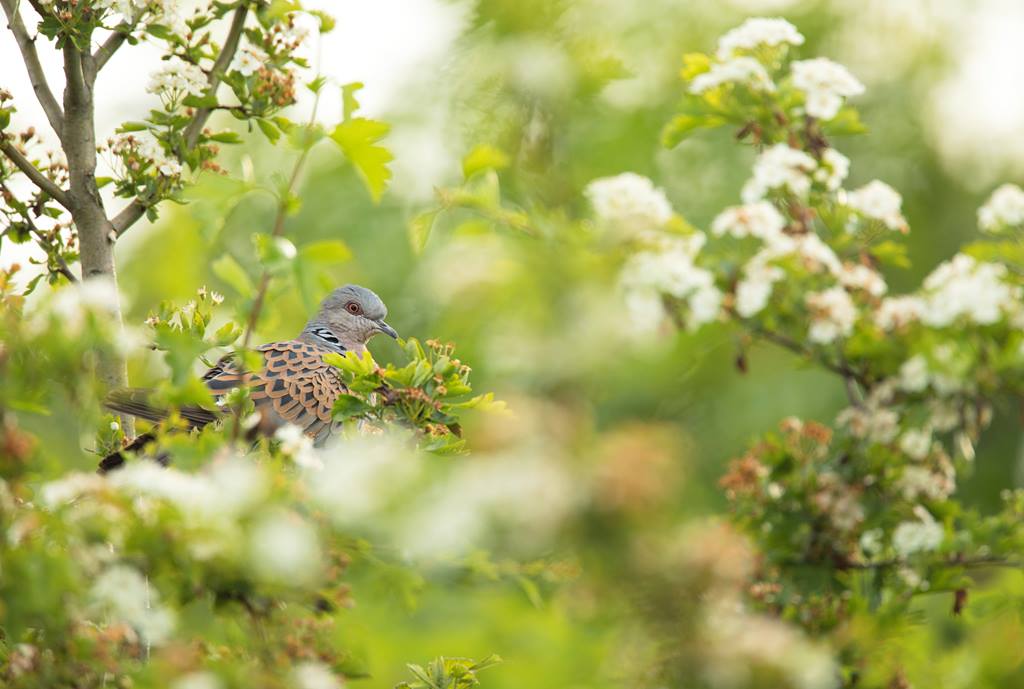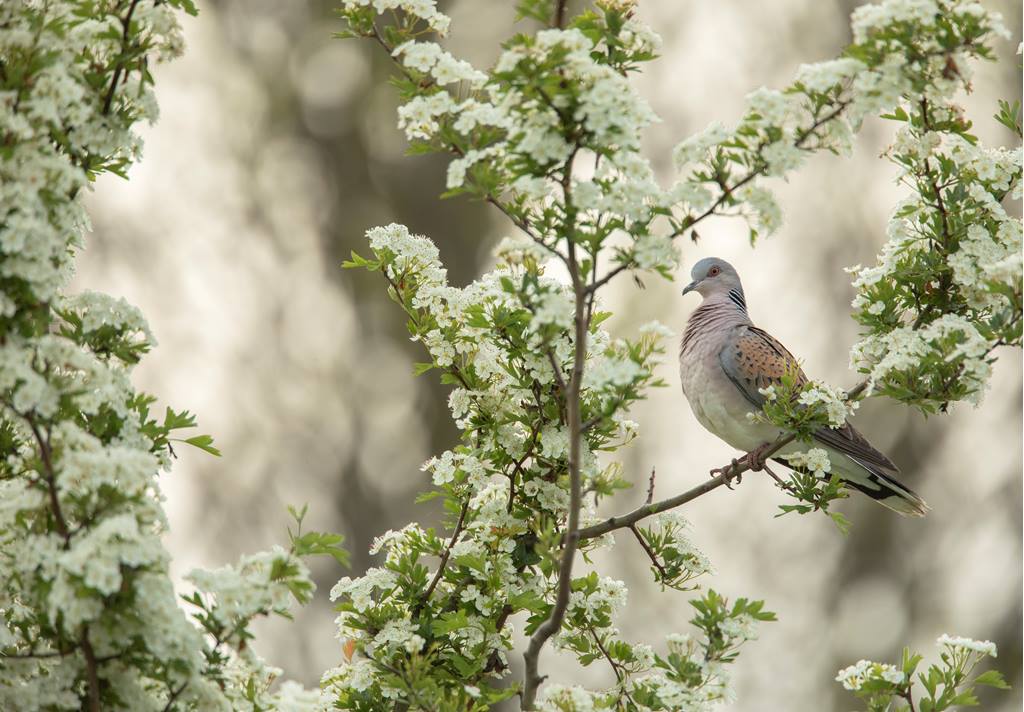Turtle Doves have received a lot of love this spring and summer – a huge thanks to all of you who are managing land for Turtle Doves. From creating seed-rich habitats to managing hedgerows and scrub sensitively and providing supplementary seed, we’re delighted to be working with so many dedicated people across East Anglia and south-east England to create the feeding and nesting areas that Turtle Doves need. While Turtle Doves will soon be departing for warmer climes, late summer is the time to think about how we can help them when they return in spring next year.
And they’re off!
September means one thing for Turtle Doves – time to head south. Birds that have spent the spring and summer months feeding and raising their chicks in the countryside of East Anglia and south-east England will now be preparing to undertake their autumnal journey in search of warmer climes for the winter months.
The birds will fly down through France, Spain and Portugal before crossing into North Africa. They then cross the Sahara Desert before reaching their West African wintering destinations in countries like Senegal, Gambia, Mali and Mauritania.

Turtle Doves need our help so that when they return to our shores in spring next year they find good nesting and feeding habitat. © Ben Andrew (rspb-images.com).Safer passage
For the third consecutive year, the autumn migration of all Turtle Doves that breed in western Europe has been made much safer thanks to hunting bans in France, Spain and Portugal. Compared with the hunting situation up to 2018, this is a very positive step and more evidence that international conservation efforts for this bird are working.
With hunting banned during the European stint of their journey for the time being, we need to make the most of this vital opportunity by acting where Turtle Doves need our help most – and that’s on their breeding grounds.
Managing land for Turtle Doves
We know that the most effective way to help Turtle Dove numbers to recover in the UK is to provide them with good quality feeding and nesting habitats. You can find out more about managing land for Turtle Doves on our ‘Create Turtle Dove habitat’ pages.
If you’re a farmer or land manager, you might be eligible for Countryside Stewardship funding to help manage your land to provide food, nesting habitat and water for Turtle Doves. The application deadline for accessing Mid Tier grants is fast approaching – 15 September 2023.
Operation Turtle Dove has a fantastic team of advisors who work with farmers, land managers, communities and other groups to help them help Turtle Doves. If you’re in the South-East or Eastern England, get in touch with your local Turtle Dove advisor to discuss how you can help Turtle Doves and whether Mid Tier stewardship would be a suitable approach for you and your land. But act fast, remember the deadline for Mid Tier applications is 15 September 2023!

The time to act is now
While it’s too early to say for certain that we’re seeing a long-term recovery of the Turtle Dove, there are some encouraging signs, including records of people spotting Turtle Doves at project sites where they’ve been absent for some time. Combined with the hunting bans in France and Iberia, now really is the time to ramp up efforts and do all we can to create the nesting and seed-rich feeding habitats that we know Turtle Doves require if their population is to recover in the UK. Let’s pull together now to restore the sound of summer.








